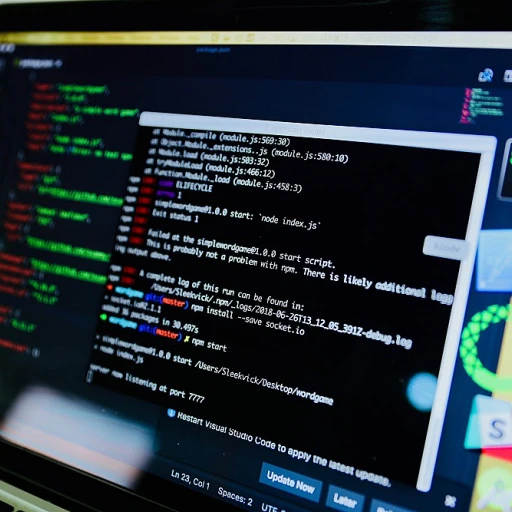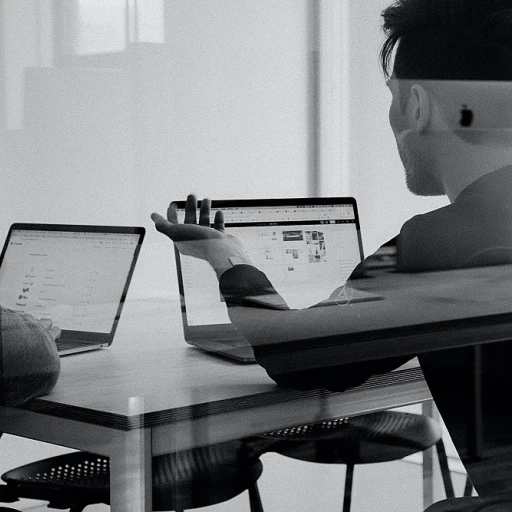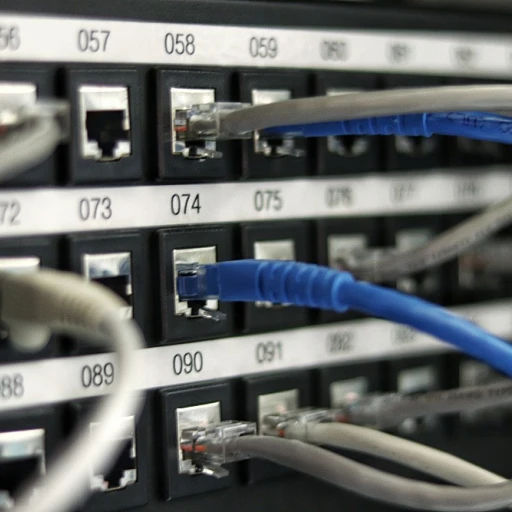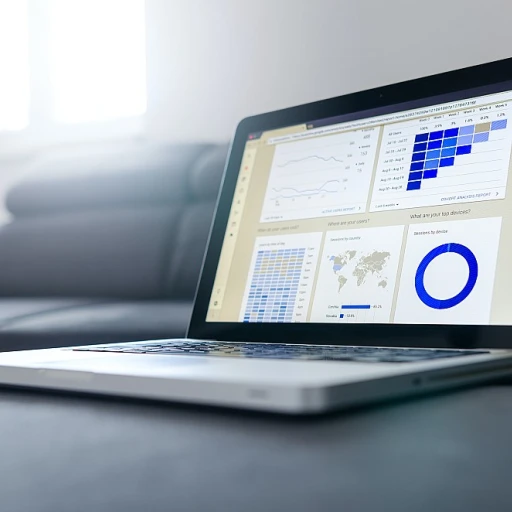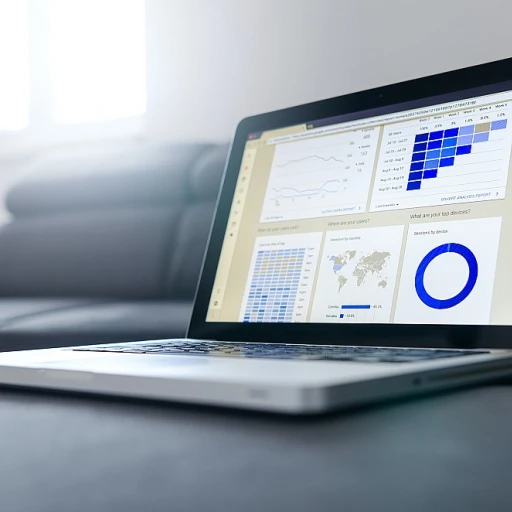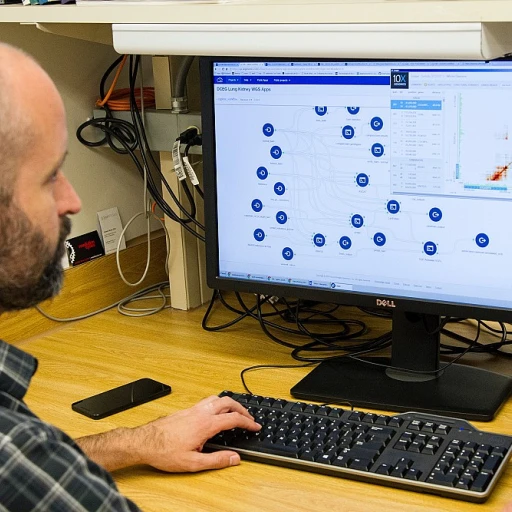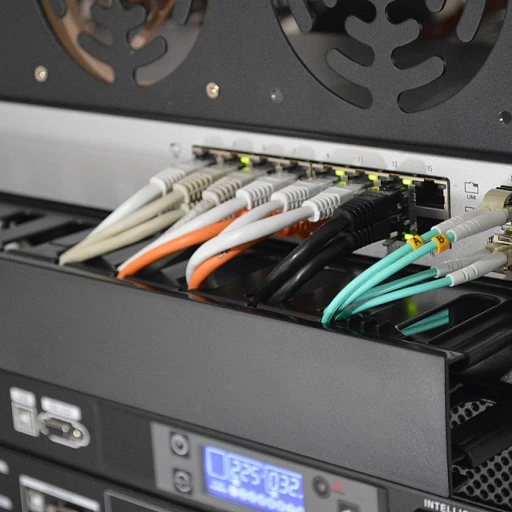
The Role of Artificial Intelligence in Smart Devices
Artificial Intelligence: The Brain Behind Smart Devices
Artificial intelligence (AI) has become the core technology driving the evolution of smart devices. From smart homes to IoT devices, AI is transforming how these systems operate, making them more efficient and user-friendly. By leveraging machine learning algorithms, smart technologies can analyze vast amounts of data in real time, enabling predictive maintenance and enhancing decision-making processes.
AI's integration into smart devices allows for seamless interaction between users and technology. For instance, smart systems in homes can learn user preferences over time, adjusting lighting, temperature, and even energy consumption to optimize comfort and efficiency. This adaptability is a testament to AI's role in creating personalized experiences for users.
Moreover, AI enhances the security of smart devices. By continuously monitoring data and identifying anomalies, AI systems can detect potential threats and respond swiftly, safeguarding user information and maintaining the integrity of smart systems. This proactive approach to security is crucial as the number of IoT devices continues to grow.
In the realm of smart cities, AI plays a pivotal role in managing resources and services. By analyzing data from sensors and other IoT technologies, AI can optimize traffic flow, reduce energy consumption, and improve public safety. This level of efficiency is essential for the sustainable development of urban environments.
As AI continues to evolve, its impact on the future of software development for smart devices will be profound. Developers will need to focus on creating AI-driven solutions that are not only innovative but also secure and user-centric. For those interested in understanding the role of an IoT developer in this landscape, this resource provides valuable insights.
Connectivity: The Backbone of Smart Devices
Connectivity as the Lifeline of Smart Devices
In the realm of smart technology, connectivity stands as the lifeline that enables seamless interaction between devices, users, and systems. The Internet of Things (IoT) has transformed how smart devices communicate, allowing for real-time data exchange and analysis. This connectivity is not just about linking devices; it is about creating a cohesive ecosystem where smart homes, smart cities, and even mobile devices can function efficiently.
At the core of this connectivity are technologies like Wi-Fi, Bluetooth, and 5G, which provide the necessary bandwidth and speed for data transmission. These technologies ensure that IoT devices can operate smoothly, offering services that range from predictive maintenance to energy management in smart homes. The ability to connect and communicate effectively is what makes these devices truly 'smart'.
Challenges and Opportunities in IoT Connectivity
While connectivity is crucial, it also presents challenges, particularly in terms of security and data privacy. As more devices become interconnected, the risk of cyber threats increases, necessitating robust security measures to protect sensitive data. This is a critical consideration for developers focusing on the future of software development for smart devices.
Moreover, the continuous evolution of connectivity technologies opens up new opportunities for innovation. For instance, advancements in edge computing are set to enhance the way data is processed and analyzed, reducing latency and improving decision-making processes. This shift towards localized data processing is pivotal for the development of smart systems that require real-time responses.
For those interested in delving deeper into the intricacies of IoT software development, exploring the potential of these technologies can provide valuable insights. Unlocking the potential of IoT software development is essential for understanding how these core technologies will shape the future of smart devices.
The Impact of Edge Computing on Smart Devices
Transforming Data Processing at the Edge
In the evolving landscape of smart devices, edge computing emerges as a pivotal core technology that reshapes how data is managed and processed. Unlike traditional cloud computing models, which rely heavily on centralized data processing, edge computing brings computation and data storage closer to the devices themselves. This shift is crucial for smart technologies that require real-time data analysis and decision making.
By processing data locally, smart systems can significantly reduce latency, ensuring that IoT devices in smart homes and smart cities operate efficiently. This capability is particularly beneficial for applications like predictive maintenance and energy management, where timely responses are critical.
Enhancing Security and Privacy
Another advantage of edge computing is its potential to enhance security and privacy. By keeping sensitive data closer to the source, smart devices can minimize the risks associated with transmitting data over the internet. This localized approach helps protect user information and reduces vulnerabilities in smart technology systems.
Optimizing Resource Utilization
Edge computing also optimizes resource utilization by offloading tasks from centralized systems. This approach not only improves performance but also reduces the energy consumption of smart devices. As a result, smart homes and smart cities can operate more sustainably, aligning with global efforts to reduce environmental impact.
As we continue to explore the future of software in smart devices, edge computing stands out as a core technology that will drive innovation and efficiency. Its integration into IoT devices promises to enhance services and improve user experiences, paving the way for a more connected and intelligent world.
Security Challenges in Smart Device Technologies
Addressing Security in the Age of Smart Devices
As smart devices become more integrated into our daily lives, the importance of security in these technologies cannot be overstated. With the proliferation of IoT devices in smart homes and smart cities, ensuring robust security systems is a core concern for developers and users alike. The interconnected nature of these devices means that a vulnerability in one can potentially compromise an entire network.
Challenges in Securing IoT Devices
One of the primary challenges in securing IoT devices is their diverse nature. These devices range from simple sensors to complex systems, each with varying levels of processing power and security capabilities. This diversity makes it difficult to implement a one-size-fits-all security solution. Moreover, many IoT devices are designed with limited energy and computational resources, which can restrict the implementation of advanced security measures.
Data Privacy Concerns
Data privacy is another significant concern in the realm of smart technology. As these devices collect and process vast amounts of data, ensuring that this information is protected from unauthorized access is crucial. The integration of artificial intelligence and machine learning in smart systems further complicates this issue, as these technologies often require access to sensitive data for effective decision making and predictive maintenance.
Strategies for Enhancing Security
To address these challenges, developers are focusing on several strategies:
- Encryption: Implementing strong encryption protocols to protect data in transit and at rest.
- Authentication: Utilizing multi-factor authentication to ensure that only authorized users can access devices and data.
- Regular Updates: Ensuring that devices receive regular software updates to patch vulnerabilities and enhance security features.
- Edge Computing: Leveraging edge computing to process data closer to the source, reducing the risk of data breaches during transmission.
As the development of smart devices continues to evolve, addressing these security challenges will remain a top priority. By implementing robust security measures, we can ensure that the benefits of smart technology are realized without compromising user safety and privacy.
User Interface Innovations in Smart Devices
Revolutionizing User Experiences with Smart Interfaces
In the rapidly evolving landscape of smart devices, user interface innovations are at the forefront of enhancing user experiences. As smart technology becomes more integrated into our daily lives, the demand for intuitive and seamless interfaces grows. These interfaces are not just about aesthetics; they are about creating a bridge between complex systems and user-friendly interactions.
One of the core technologies driving these advancements is artificial intelligence. AI enables devices to learn from user behavior, offering personalized experiences that adapt over time. This is particularly evident in smart homes, where IoT devices work together to anticipate user needs, adjusting lighting, temperature, and even suggesting energy-saving measures based on real-time data analysis.
Voice and Gesture Control: The New Norm
Voice and gesture controls are becoming standard in smart systems, allowing users to interact with devices in more natural ways. This shift is powered by advancements in machine learning and data processing, enabling devices to understand and respond to complex commands. In smart cities, for instance, voice-activated services can streamline public transportation systems, enhancing efficiency and user satisfaction.
Moreover, the integration of sensors in IoT devices enhances their ability to gather and process data, leading to more informed decision-making. These sensors are crucial for predictive maintenance, ensuring systems operate smoothly and reducing downtime.
Challenges and Opportunities
While these innovations offer numerous benefits, they also present challenges, particularly in terms of security. As devices become more interconnected, ensuring data privacy and protection becomes paramount. Developers must prioritize security in the design and implementation of smart technologies to safeguard user information.
Looking ahead, the future of software development for smart devices will likely focus on creating more immersive and interactive experiences. As connectivity and edge computing continue to evolve, the potential for real-time, responsive interfaces will expand, offering new opportunities for innovation in smart technology.
The Future of Software Development for Smart Devices
Emerging Trends in Software Development for Smart Devices
The landscape of software development for smart devices is rapidly evolving, driven by the need to integrate more sophisticated technologies and meet the growing demands of users. As smart homes, cities, and IoT devices become more prevalent, developers are focusing on several key areas to enhance functionality and user experience.
Integration of Machine Learning and AI
Artificial intelligence and machine learning are at the core of smart technology, enabling devices to perform complex data analysis and make real-time decisions. These technologies are crucial for predictive maintenance and enhancing the efficiency of smart systems. Developers are increasingly incorporating AI to improve the adaptability and intelligence of smart devices, ensuring they can process vast amounts of data effectively.
Advancements in Connectivity and Edge Computing
Connectivity remains the backbone of smart devices, with edge computing playing a pivotal role in reducing latency and improving data processing speeds. By processing data closer to the source, edge computing enhances the performance of IoT devices, allowing for more efficient energy use and real-time data processing. This shift is crucial for the development of smart cities and other large-scale IoT implementations.
Focus on Security and Privacy
As smart devices become more integrated into daily life, security challenges continue to be a significant concern. Developers are prioritizing the implementation of robust security measures to protect user data and ensure the integrity of smart systems. This includes developing secure communication protocols and enhancing the resilience of IoT devices against cyber threats.
User-Centric Design and Interface Innovations
Innovations in user interfaces are essential for making smart technology more accessible and intuitive. Developers are focusing on creating seamless user experiences that simplify interaction with complex systems. This involves designing interfaces that are not only visually appealing but also functional and easy to navigate, ensuring that users can fully leverage the capabilities of their smart devices.
Future Directions and Challenges
Looking ahead, the future of software development for smart devices will likely involve further integration of cloud computing and the Internet of Things. Developers will need to address ongoing challenges related to interoperability and the standardization of technologies. As the demand for smart devices grows, the focus will be on creating scalable, efficient, and secure systems that can adapt to the evolving needs of users and the environment.



